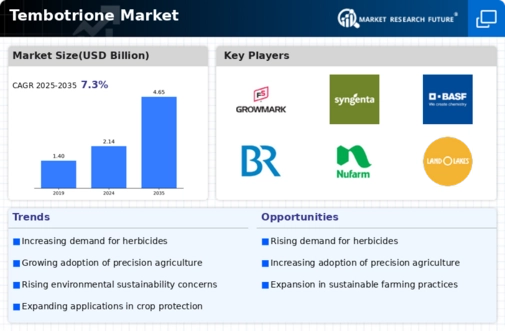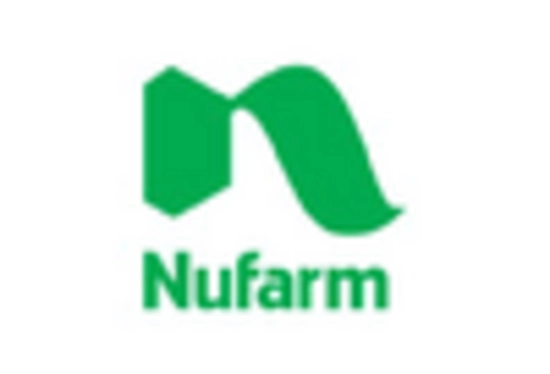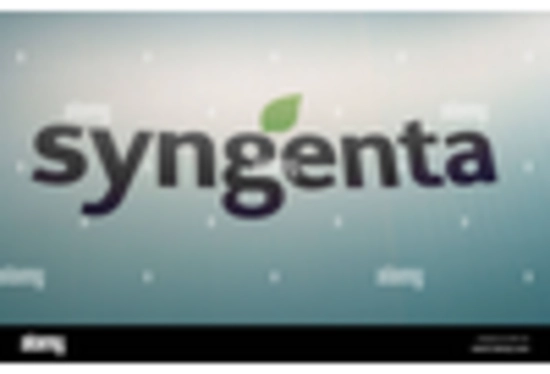Rising Demand for Herbicides
The Tembotrione Market is experiencing a notable increase in demand for herbicides, driven by the need for effective weed management in various crops. As agricultural practices evolve, farmers are seeking solutions that not only enhance crop yield but also minimize environmental impact. Tembotrione Market, known for its selective action against broadleaf weeds and certain grasses, is gaining traction among growers. According to recent data, the herbicide market is projected to grow at a compound annual growth rate of approximately 5.2% over the next few years. This growth is indicative of a broader trend towards integrated pest management strategies, where Tembotrione Market plays a crucial role in sustainable farming practices.
Regulatory Support for Herbicide Use
Regulatory developments are playing a pivotal role in shaping the Tembotrione Market. Governments are increasingly recognizing the importance of effective weed management in ensuring food security and are thus supporting the use of herbicides that meet safety and efficacy standards. Tembotrione Market has been approved in various regions, which facilitates its adoption among farmers. The regulatory landscape is expected to evolve, with potential new approvals and guidelines that could further enhance the market for Tembotrione Market. This supportive regulatory environment is crucial for the growth of the herbicide market, which is anticipated to reach USD 30 billion by 2025.
Growing Awareness of Crop Yield Improvement
Awareness regarding the importance of crop yield improvement is driving the Tembotrione Market. As global food demand continues to rise, farmers are increasingly focused on maximizing their yields through effective weed control. Tembotrione Market, with its targeted action, helps in reducing competition from weeds, thereby allowing crops to thrive. This awareness is further fueled by agricultural extension services and educational programs that emphasize the benefits of using advanced herbicides. The herbicide market is projected to expand, with estimates indicating a growth rate of 4.5% annually, reflecting the critical role of products like Tembotrione Market in enhancing agricultural productivity.
Increasing Adoption of Sustainable Practices
The Tembotrione Market is witnessing a shift towards sustainable agricultural practices, as consumers and regulatory bodies increasingly prioritize environmental stewardship. Farmers are adopting integrated weed management systems that incorporate Tembotrione Market due to its effectiveness and lower environmental impact compared to traditional herbicides. This trend is supported by various initiatives aimed at promoting sustainable farming, which often include the use of selective herbicides like Tembotrione Market. The market for sustainable agriculture is projected to grow significantly, with estimates suggesting a value of USD 24 billion by 2027, indicating a favorable environment for Tembotrione Market's continued adoption.
Technological Innovations in Crop Protection
Technological advancements in crop protection are significantly influencing the Tembotrione Market. Innovations such as precision agriculture and the use of drones for targeted application are enhancing the efficiency of herbicide use. These technologies allow for more accurate application rates, reducing waste and improving efficacy. Furthermore, the integration of data analytics in farming practices enables farmers to make informed decisions regarding herbicide application, thereby optimizing the use of Tembotrione Market. The market for precision agriculture is expected to reach USD 12 billion by 2026, suggesting a robust opportunity for Tembotrione Market as part of these advanced agricultural practices.


















Leave a Comment